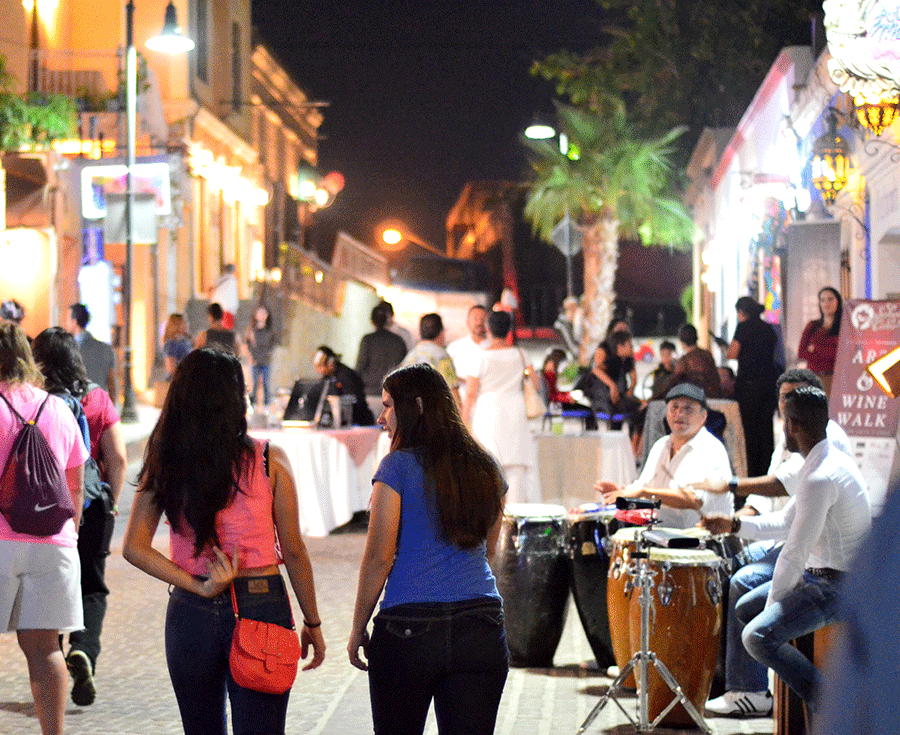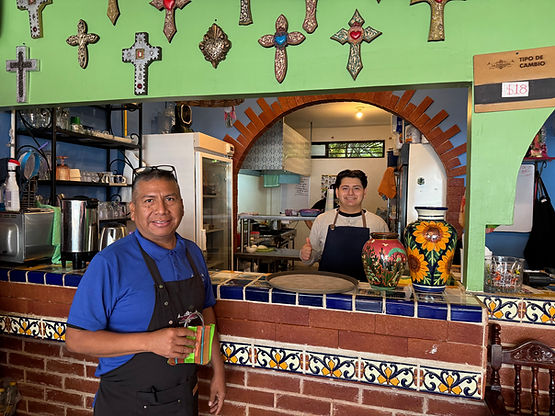
Los Cabos Mexico
Fell Walking in England
At the most southern tip of the Baja peninsula lies Los Cabos, a place where the 1,000 mile-long warm waters of the Sea of Cortez meet the wild, unfettered currents of the Pacific Ocean. At this lands-end place is a collection of towns that have subsisted on the gifts of the sea - the abundant and sometimes spectacular marine life, the serene sandy beaches, the colorful and musical tropical birds - which now include tourism.




Background
The entire Baja peninsula, which stretches south from the US border near San Diego, is an arid finger of rock and sand with oases sprinkled in places where ground water can be accessed. Baja is separated from the Mexico mainland by the Sea of Cortez, also known as the Gulf of California - a stretch of warmer water that is an important breeding ground for multitudes of marine life.
Originally part of the North American tectonic plate, a rift valley formed about 2 million years ago creating a divide, and the peninsula hopped a ride on the Pacific tectonic plate which is moving north along the coast - geologists say that Baja will some day find itself parallel with San Francisco!
The earliest inhabitants occupied this isolated desert land perhaps as long as 20,000 years ago. During repeated attempts by Spanish conquistadores to make something of the area in the 1500's, it was not permanently colonized until the late 1600's due to the remoteness of the southern Baja peninsula.
The vistas are long and the sunsets brilliant on Baja's west coast, but this area is not a tropical paradise as other places in Mexico are known to be.
Visitors choose this area for vacationing and emigrating because it is warm and sunny, and it is easily accessed from the States. Baja has the relaxed mañana lifestyle attractive to surfers, spa denizens, and retirees. There is an abundance of hotels and tourist service jobs which creates an attraction for those seeking the work-to-live experience.
How to book:
-
The best way to see Los Cabos is to book your own holiday online. Get your travel and lodging locked in and then leave the rest to your whims once you get there.
Climate:
-
The climate is dry and desert-like. Flying down to Los Cabos from California, you will see below you a landscape of rock and sand, but don’t worry - there is vegetation when you get to your destination
-
In winter the air is warm during the day and folks go around in summer attire. The nights are mostly warm but can be a bit chilly during deep winter.
-
In the spring the weather is glorious. Winter and spring months are dry and sunny.
-
The summer months are quite hot and many snowbirds fly back north to their homes to wait out the blast furnace weather.
-
July through October is the rainy season and the humidity combined with the heat can be unpleasant.
Currency:
-
The Peso exchanged for about 20 to the US dollar when I was there, winter 2025. You can use USD almost anywhere but changing your dollars to Pesos at a Cambio will save you money because most shops round down and your exchange rate will suffer.
-
Los Cabos has been “found” by tourists and emigres alike, and the prices have risen to the occasion as well. Real estate in particular is super expensive. Don’t expect to get the bargain rates for lodging and car rentals that were the norm 10 years ago. Even food is expensive!
Language:
-
Yes, they speak Spanish in Mexico and, no, not everyone speaks English so bone up on your survival phrases.
Transportation:
-
Many snowbirds drive down the peninsula to reach Los Cabos, and the scenery and places to stay along the way are spectacular and worth the trip. However it is a 1,000 mile journey and the roads are, well, Mexican - smooth and easy in places where roads are new, and littered with cavern-sized potholes in other places. If you drive, plan your route according to recommendations of where the pavement is passable at the time.
-
Air travel can be affordable if you book with a Mexican airline flying from across the border. I took an Uber, a half hour drive from San Diego, to the Cross Border Express bridge that spans the Mexico/United States border and lands you at the Tijuana airport. Tickets are cut rate but you might want to pay a little extra to select your seat, and always check in way ahead of the flight date. I had a nail-biting experience being tossed into standby trying to get home on Presidents Day with an over-sold flight.

To help you make decisions about your trip
Recommendations
Beaches
The beaches are picturesque in Cabo San Lucas. On the Pacific side, the water is very rough and dangerous - even experienced swimmers have gotten into trouble due to the wild and unpredictable currents. If you are staying in town, it is best to enjoy the beaches near the marina in the sheltered cove.


Sunset beach on the Pacific side is a famous spot for observing, you guessed it, the sunsets which can be quite fiery when there is something in the atmosphere to scatter the colors. I climbed up the Cerro de la Z, which overlooks Sunset beach, for a cinematic display of red and orange skies.
The loveliest beach I visited was on the south side of the Pedregal, a rather exclusive neighborhood perched on a hill west of the marina. The beaches in Mexico are reserved for the public, so restricting access is not allowed.
The Pedregal neighborhood, a gated community, allows visitors to drive through after you surrender your driver’s license at the gate. You will climb up and over the hill, meander through the heavily curated landscapes to the parking area at the bottom, and walk a short distance to the beach. It is uncrowded and very photogenic with wonderful golden sand and interestingly shaped rock outcroppings. The palatial homes that front the beach inspire wonder as well. This is not a beach for taking a dip, however, as it is on the pacific and rip tides are a frequent hazard.
Just off the marina is Medano beach where you can sunbathe on the sand but it won’t be restful as it is crowded and there are many souvenir hawkers hassling tourists. There is also a good restaurant or two where you can order ceviche and tacos. My favorite find at Medano was the open-air massage studios. I paid $45 plus tip and received an hour-long massage (although you can get them cheaper elsewhere), by a lovely woman who may or may not have been named Tania, that was one of the best ever!
From the marina you might want to rent a boat to take you out to the beaches by the famous arch at “the tip of Baja,” Lovers Beach and Divorce Beach.
Water



In one of the most beautiful bays in Mexico (Cabo Bay) you will find the usual water-based attractions that populate most beach towns all over the world, such as deep-sea fishing, Jetski rentals, and water bikes. But wait! Less typical, but common at Cabo, are the glass boats for gawking at the fish. In the shallows, bright tropical fish can be seen just below the surface. You can view them through a so-called “glass bottom boat” which is just a regular wooden boat with a glass panel inserted at the bottom. For a more full view of the briny below you can catch a ride on a completely transparent boat called a ClearBoat. These are booked at the marina.
Snorkeling and scuba diving are activities that take you down to where the action is, even within Cabo Bay, and the famous Pelican Rock near the arch is a shallow cove abounding with tropical fish.
I am a inveterate stand-up paddle boarder in San Diego but even I had never tried the “electric paddle board!” You can rent these along with a bilingual guide from OK to SUP (oktosup.com) out of Medano beach. The tour will take you to all the sights around Cabo Bay for sightseeing and snorkeling providing all the necessary accoutrements.
Cabo Pulmo
If you want a more naturalistic and less harried experience, you should drive 2 hours up the east coast to do snorkeling and scuba diving at Cabo Pulmo, a National Marine Park.
My morning out in the park involved first wet-suiting up at the Cabo Pulmo Water Sports headquarters and walking down to the waiting boat.
My fellow passengers were treated to the spectacle of Humpback Whales throwing themselves out of the water with apparent glee, curious Grey Whales swimming close to the side of the the boat, pods of dolphins slicing through the waves, and sea lions sunning on rocks shaped like sea lions.
The main attraction was the swim through chilly waters to gawk at many kinds of colorful and oddly shaped reef fish. Sometimes turtles can be seen here too.
This marine park has only recently been officially protected. Previous to that designation, the reef was dying and the waters over-fished. Some brave and dedicated citizens worked hard to bring this crisis to light and to revive the populations of wildlife that now thrive in the clear waters of the park.



I had the honor of interviewing one man whose nature conservation participation is legendary, Pepe Murrieta, about his efforts to revive Cabo Pulmo’s marine splendor.

Pepe runs a glamping place in Cabo Pulmo where we stayed. You can rent a shelter or bring your own. Everything in Cabo Pulmo is walkable.
If you’re driving up to Cabo Pulmo, you can take a break from the dusty main paved road and drive half an hour on an even more dusty unpaved road into the hills to visit the Santa Rita Hot Springs. This destination is worth the trip and you should plan to spend several hours there, relaxing and enjoying the springs and the river. Bring a picnic and grab a chaise in the shade. You can even spy on the waterfowl as they scavenge in the reeds and talk loudly to one another about their plumage.

San Jose del Cabo
San Jose del Cabo is the seat of government of Los Cabos, and where you disembark from your flight. To quote an American ex-pat (my sister) “It has a lot of the appeal that San Lucas has, as far as the weather, beaches, and Mexican environment, but it’s cleaner and quieter and more pristine. It’s not as much of a wild party area and there’s many upscale hotels and restaurants.”
With authentic Mexican culture, Spanish colonial architecture, museums and art galleries, it is more of a cultural experience and less of the restless, constant flow of activity in Cabo San Lucas.
San Jose's narrow streets are described as “charming” where you will find, every Thursday evening from 5 to 9 pm, an arts crawl called the San Jose del Cabo Art Walk, from November through June.



Photos Credit:
San Jose del Cabo
Gallery District
Adventure
Adventure experiences take you into the heart of Baja or out into the waters with tours such as ATV rentals, horse or camel rides on the beach, zip lines in scenic canyons, or pleasure yachts and fishing boats in the deep sea waters with an adventure company such as Picacho Adventures.
I opted for the daredevil thrill of clipping my harness onto a cable and free falling across a canyon. It is totally safe, exciting, and fun and you feel like an explorer at the end of the day.

I interviewed the founder of Picacho, Juan Davila, whose meteoric rise from a boat washer to a boat owner is a wonderful success story.

Food
Baja cuisine is perhaps best known for its fish tacos, ceviche, and chilaquiles. In Los Cabos, much of the victuals on offer have been modified to appeal to the tourist palate (you can get wood-oven pizza here), but you can find authentic Baja dishes by asking a local for suggestions. I had breakfast at a downtown eatery called La Poblanita - chilaquiles with scrambled eggs - it was delicious!
The brave and iron-stomached will want to try the street food from cart vendors most anywhere in the city. I am not among the legions of such brave individuals, but I did treat myself to a favorite sweet snack: papaya and watermelon spears from a fruit vendor near my BnB. Refreshing on a hot afternoon.

Also local and authentic in their own way are some boutique restaurants, such as Casa Martin, which serves up sumptuous dishes conjured by this celebrity chef in a sparklingly elegant ambiance.
I interviewed Manuel, the general manager of this exquisite bistro, to find out what makes an authentic Baja meal.






















